Why has Barcelona’s Sagrada Familia taken over 100 years to be built?
They say that Rome wasn’t built in a day, and neither was Barcelona’s La Sagrada Familia.
This weekend, a giant five-tonne star has been hoisted atop the forever-incomplete basilica’s new Tower of the Virgin Mary, the tallest of what will one day be 18 spires.
Construction on the religious masterpiece has been in progress since 1882.
Reactions to ‘Bethlehem’s Star’ suggest the addition marks another blow to the “world’s oldest building site”.
But what has taken it Sagrada Familia so long to come in the first place?
Here’s a timeline of all of the wars, disputes, and deaths that have halted its progress.
1874: Campaign for a new Spanish religious building begins
Bookseller Josep Maria Bocabella returned from a trip to the Vatican in 1872 inspired by the grand Catholic works of art that dominated the city’s skyline.
He spent eight years campaigning and fundraising for Barcelona to develop a brand new cathedral.
Using his connections as founder of one of the city’s Spiritual Associations, Bocabella enlisted architect Francisco de Paula del Villar to come up with a design inspired by the neo-gothic cathedrals across Europe.
Land was purchased Barcelona’s Eixample district for a then-equivalent of €1,034.
The original plans for La Sagrada FamiliaUnsplash/Wikimedia Commons
Their partnership would last less than a decade of the building’s arduous lifespan after a number of conflicts arose about Sagrada Família’s intricate design.
Bocabella envisioned it being Europe’s tallest, dwarfing the likes of St. Peter’s Basilica.
It soon became apparent that the project required someone that could cope with its immense technical demands and monetary costs.
All that remains from this original architect’s vision is the building’s crypt. Bocabella ploughed onwards, seeking someone with dreams as big as his.
1882-1884: Land found and foundations laid, the introduction of Antoni Gaudí
Antoni Gaudí’s unbridled ambition saw the project take a completely different shape in 1883, a year after its cornerstone was laid by Bishop Urquinaona.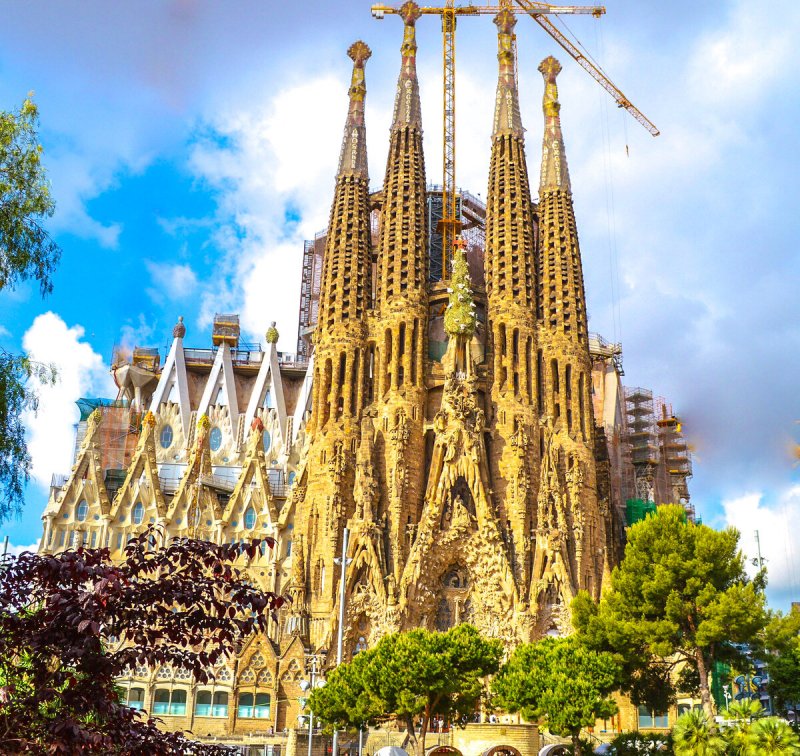
As Chief Architect, he reimagined the basilica as a vast, nature-influenced, form, full of Art Nouveau-inspired curvature and 12 towers – one to represent each disciple.
His complex designs coming to fruition would make the Sagrada Europe’s tallest Catholic hub.
Modernist Gaudí knew from the start that this would be no easy task – he was vocal that construction works would not be completed in his lifetime.
Gaudi was brought into the project after founder Josep Bocabella’s conflict with its principal architectWikimedia Commons
Much of his work was spent developing deeply detailed 3D models instead of traditional sketches to ensure whoever the project was passed on to would know exactly how it was supposed to look.
When asked if this would be problematic for his vision, he’d respond: “My client (God) is not in a hurry.”
The architect would juggle the Sagrada with other clients until 1914, where he set everything else aside to work on it exclusively.
Gaudí would go as far as leaving his home Park Guell (now a museum in his name) to move in to the building site.
1926: Gaudí dies in a tragic accident
After devoting himself to the Sagrada for 43 years, Antoni Gaudí was hit by a tram while walking to confession, as he did every day.
The 73-year-old’s unkempt appearance lead people to believe he was a beggar, rather than Spain’s most famous architect. Hygiene and nutrition had been shunned in the name of his passion project.
Architects have worked tirelessly for decades to capture the details of Gaudi’s designUnsplash
A funeral procession was attended by thousands of mourners, concluding at the incomplete, but tremendous, church.
Gaudí only lived to see one of the holy space’s iconic bell towers finished the year prior.
The basilica stood at 15-25 per cent complete the year it lost its creator.
His accidental death derailed any progress entirely for over a decade.
1936: Staff killed, models destroyed in the Spanish Civil War
Architects had to work hard to piece together the remains of destroyed modelsUnsplash
A time of civil unrest sees anarchists break in to Gaudí’s former office.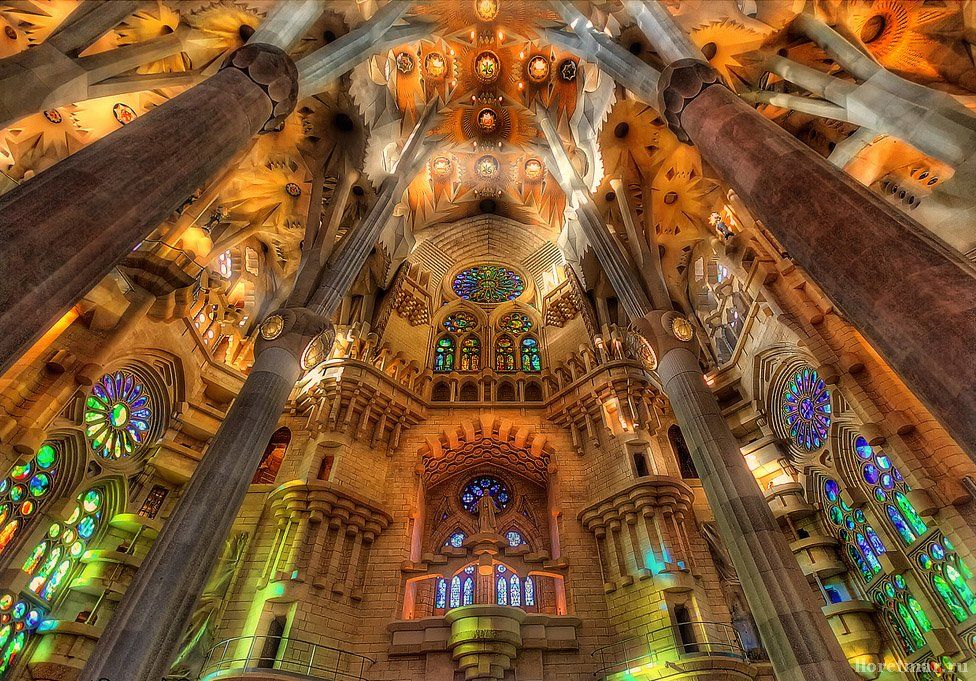
Models are smashed, plans are burned, and the church’s crypt is ruined in the process.
More devastation follows as 12 people involved in sustaining the creation are killed in the war.
Construction is halted ever further as the remaining members of La Sagrada Familia’s team painstakingly try to put together the salvageable pieces.
Though its exterior went untouched, no real progress is made until the end of the war in 1939.
1938: George Orwell slates the design
The British novelist was no fan of Gaudi’s exterior designUnsplash
Influential British novelist George Orwell pays the site a visit in one of its biggest periods of stagnancy.
He described the cathedral as “one of the most hideous buildings in the world.”
“Unlike most of the churches in Barcelona it was not damaged during the revolution—it was spared because of its ‘artistic value,’ people said. I think the Anarchists showed bad taste in not blowing it up when they had the chance.”
1939-1986: A revolving door of architects and funding problems
Work ploughed on through Francisco Franco’s long dictatorship over Spain.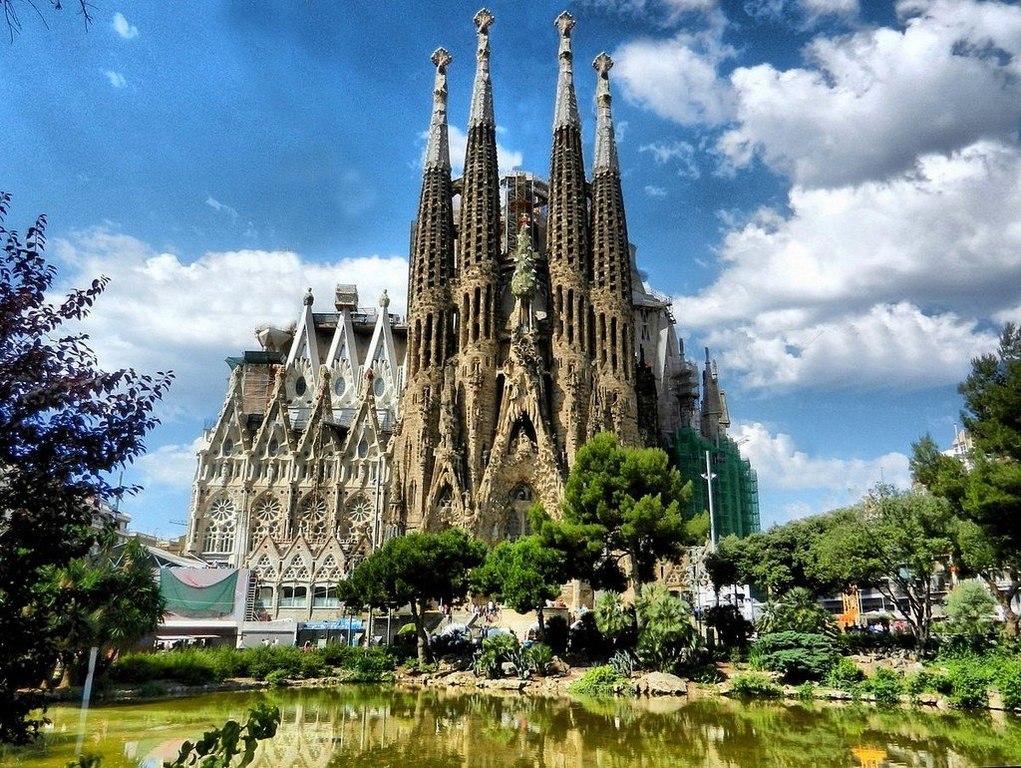
Franco showed little interest in La Sagrada, but there was little he could do. Gaudí had insisted it be funded by the people of Spain’s Catholic community.
Visitors pay year-round to experience La Sagrada Familia’s stained glass decorative workUnsplash
Four different architects took control of proceedings at this time: Francesc de Paula Quintana in 1939, Isidre Puig i Boada and Lluís Bonet i Garí in 1966, Francesc Cardoner i Blanch in 1983, and Jordi Bonet i Armengol in 1985.
No landmarks were reached until 1976, when the bell towers accompanying Gaudí’s Passion Facade were completed, giving Spaniards a real sense of what could become of the final product.
2007: Spanish government propose controversial train tunnel underneath the building
Representatives of the building campaigned for years to stop a train tunnel being built beneath itUnsplash
After Gaudí’s contributions to the cathedral were declared a UNESCO World Heritage site in 2005, things were on the up for the 200-strong team behind La Sagrada.
That was until the government tabled proposals that would see a high speed rail network run underneath foundations that were almost a century old.
Questions were raised about how this could affect the structural integrity of the building. With so much left to do, it was the last thing the architects and engineers needed,
Construction began in 2010 after government officials insisted the underground tunnels would not hinder any ongoing work.
The service became active in 2013, rendering a six-year battle to get it stopped pointless.
2010: Consecrated by Pope Benedict XVI
Pope Benedict arriving to bless La Sagrada Familia as a mini basillicaAP
Pope Benedict XVI paid a visit to La Sagrada in 2010 to consecrate it as an official basilica.
6,500 watched the mass from the inside and over 50,000 people gathered on the streets to receive communion from hundreds of bishops and priests.
A mere 15 years ago, there was no roof on the inner part of the church, as it stood between two facades with eight bell towers, one side looking like a sandcastle, the other a work of art inspired by cubist painting.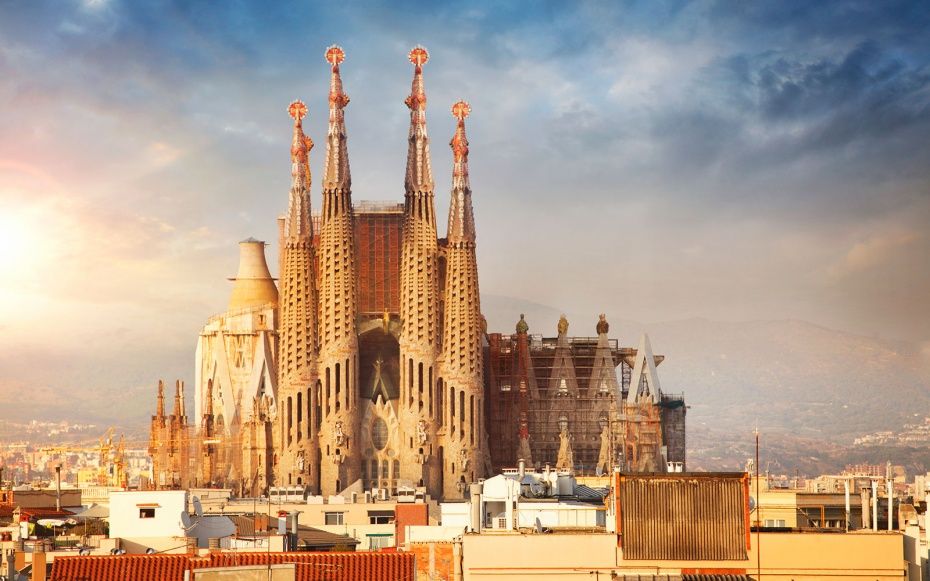
An organ was installed and the main nave covered to allowing religious services to be conducted.
Like all things La Sagrada, an official weekly service wasn’t put in place for another seven years.
Now, it’s open to visitors every Sunday at 9 am.
2019: Completion date set for 2026 after new permits approved
Each roof panel is produced in a special location and transported from miles awayAP Photo
La Sagrada Familia is now so old parts completed in the early 20th century have had to be refurbished.
At this stage the Spanish government decide to turn up the heat in a long battle for some sort of financial contribution from the developers.
Threats were made that if the project didn’t carry a license, building work could no longer take place.
UNESCO was able to assist matters in 2017 by paying €37 million for the permit oversight. But the government insisted they needed assurance that the planning was above board from here onwards.
A seven-year permit is granted and a completion year of 2026 is set.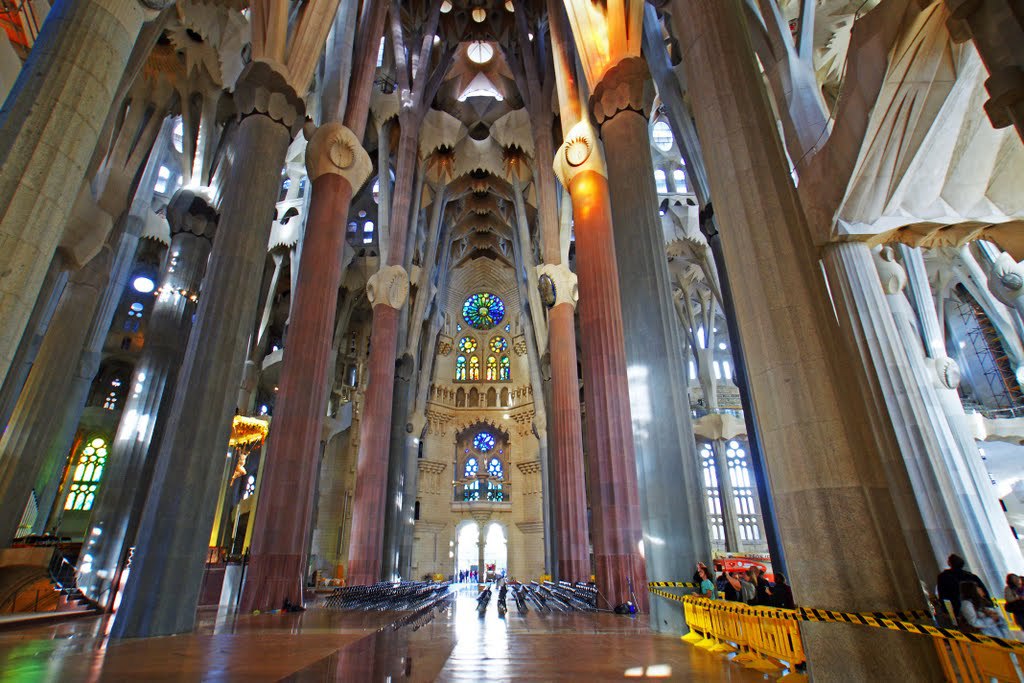
Should the timings fall into place, the basilica will be completed on the centennial anniversary of Gaudí’s death.
That was, of course, until COVID-19 hit Europe two years ago.
2021: Where are we now?
The holy space sits atop the Barcelona skylineAP
Things were plain sailing for two years until a global pandemic was sprung upon society as we know it.
COVID halted construction on the structure for the first time since the Spanish Civil War saw parts of it devastated.
Several months of inaction last year have likely pushed the 2026 deadline backwards as the team behind its completion try to cover lost ground.
This also proved a tragedy for La Sagrada’s funding pipeline – per Gaudí’s request that the project not run on corporate donors, personal donations and ticket sales were going to ensure €36 million was paid to the Spanish government in arrears until 2026.
20 million people visit the area each year to admire the church’s exterior and 4 million of those end up being paying customers at the cost of €26 a ticket.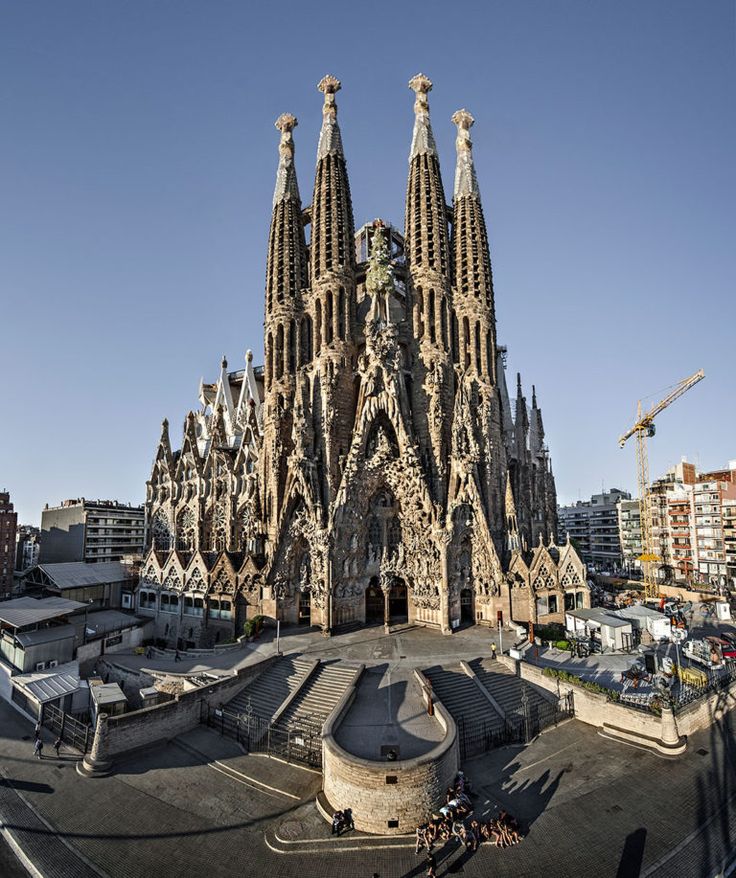
It’s not all doom and gloom – crucial steps are being made, such as the completion of towers and the addition of decorative elements like the aforementioned ‘Bethelem Star’.
And La Sagrada Familia has also been reopened for public entry for some time.
Gaudí was right – he’d never live to see the day this project reached its immense potential.
Many people don’t. Russia’s famous St. Basil’s Cathedral took 123 years to sort out, St. Peter’s Basilica reached 150 years. Stonehenge took a whopping 1,600.
Though this process has been plagued by ill-judged decisions, finances and global disruption, at its core are a team of people wanting to retain the integrity of a space he worked so hard to build.
We look forward to seeing it come alive, whenever that may be.
Sagrada Familia Basilica Is Almost Finished, After 140 Years
“”
The exterior of the unfinished Sagrada Familia Basilica is seen on July 13, 2019, in Barcelona, Spain.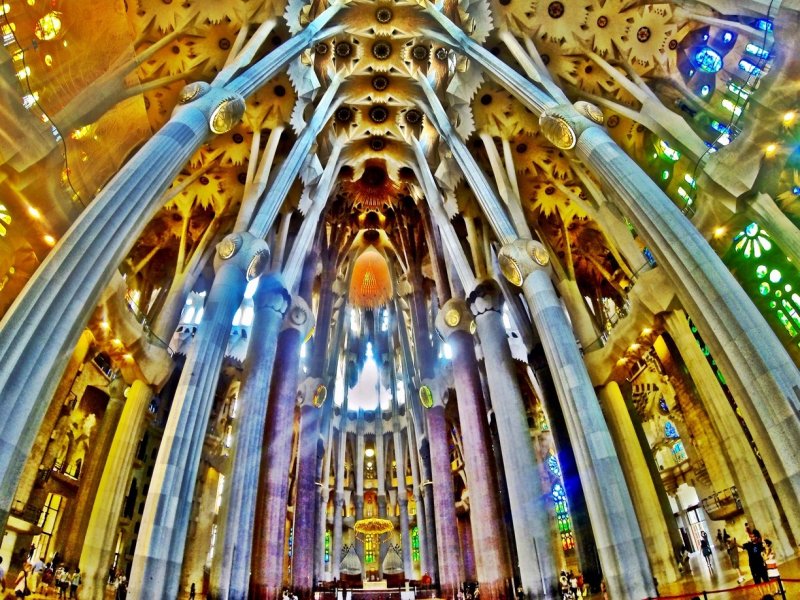
La Basílica de la Sagrada Familia (“The Basilica of the Holy Family”) in Barcelona, Spain, is unlike any building in the world. The church’s famous Nativity Facade looks from a distance like supersized drip sandcastle, but closer inspection reveals ornately sculpted towers that have been described as “the Bible written in stone.”
The architect of the Sagrada Familia was the eccentric and deeply religious Catalan genius, Antoni Gaudí, who was struck and killed by a streetcar in 1926, when only the Nativity Facade of his masterwork had been completed. The rest of the ambitious structure existed only in Gaudí’s complex architectural drawings and scale plaster models.
Advertisement
Tragically, Gaudí’s priceless models and most of his drawings were destroyed by anarchist revolutionaries just 10 years after his death. And ever since, generations of architects and engineers have labored to piece together Gaudí’s singular vision and finish his magnum opus.
As of this writing, the Sagrada Familia is 140 years old — the first stone was laid in 1882 — making it the longest-running active building project on Earth.
Incredibly, it wasn’t until 2019 that the city of Barcelona officially granted Sagrada Familia a construction permit, even though Gaudí applied for one in 1885. The permit itself was the most expensive on record, a whopping $5.2 million (4.6 million euros) to complete the monumental project by 2026, the 100th anniversary of Gaudí’s death. Due to the COVID-19 pandemic and the delays in construction it caused, as well as the drop in funding from fewer visitors, it’s unclear what the completion date will be.
Advertisement
A Forest of Stone
As an architect and structural engineer, Gaudí was at least a century ahead of his time. His 11 visionary works in and around Barcelona — seven of which are UNESCO World Heritage Sites — demonstrate how Gaudí employed wildly innovative building techniques to mimic the beauty of nature.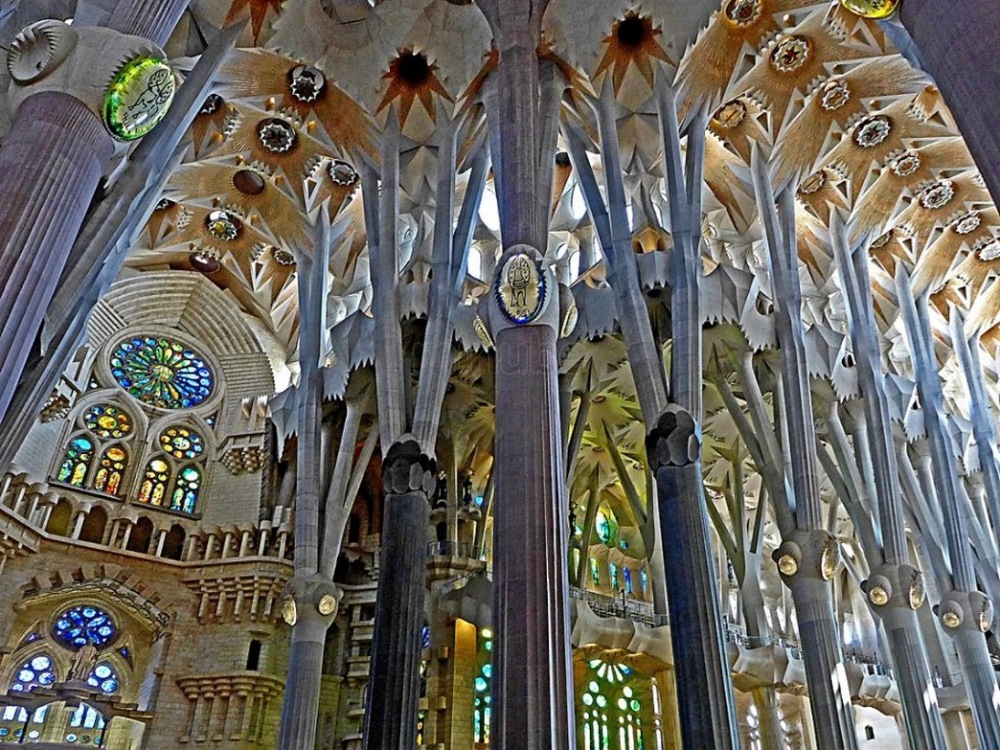
Gaudí’s Park Güell, on a hill overlooking Barcelona, features a broad patio contained by wavy, curved walls adorned with colorful Mediterranean-tiled mosaics. And his Casa Battló looks as if an alien apartment complex landed in the middle of a 19th-century city. Its breathtaking facade is an architectural crazy quilt of curved stone, iron, glass and tile, all girded by Gaudí’s uncanny grasp of engineering and materials science.
Advertisement
“”
Architect Antoni Gaudí (1852-1926) thought that buildings could be constructed like sculptures.
Apic/Getty Images
Gaudí was a devout and passionate Catholic who believed that the deepest way to commune with God was to abide in nature, his creation. When 31-year-old Gaudí received the commission to build the Sagrada Familia church, he drew up plans for a towering structure with 18 spires representing the 12 Apostles, four evangelists, the Virgin Mary and Jesus Christ.
In contrast with the grand exterior, the inside of the Sagrada Familia is meant to evoke a naturalistic forest of stone.
Advertisement
Getting Inside Gaudí’s Mind
Gaudí worked on the Sagrada Familia for 40 years, fully devoting the last years of his life to the project. “He wanted to write the history of the Catholic faith in one building,” biographer, Gijs van Hensbergen, told the TV show “60 Minutes.” Van Hensbergen added that Gaudí slept at the construction site and took little care for appearance, wearing frayed pants held up by a rope belt.
Gaudí knew that he wouldn’t live to complete his masterwork, so he drew up detailed architectural plans, and most importantly, scale plaster models of each of the cathedral’s sculpted facades and towering spires.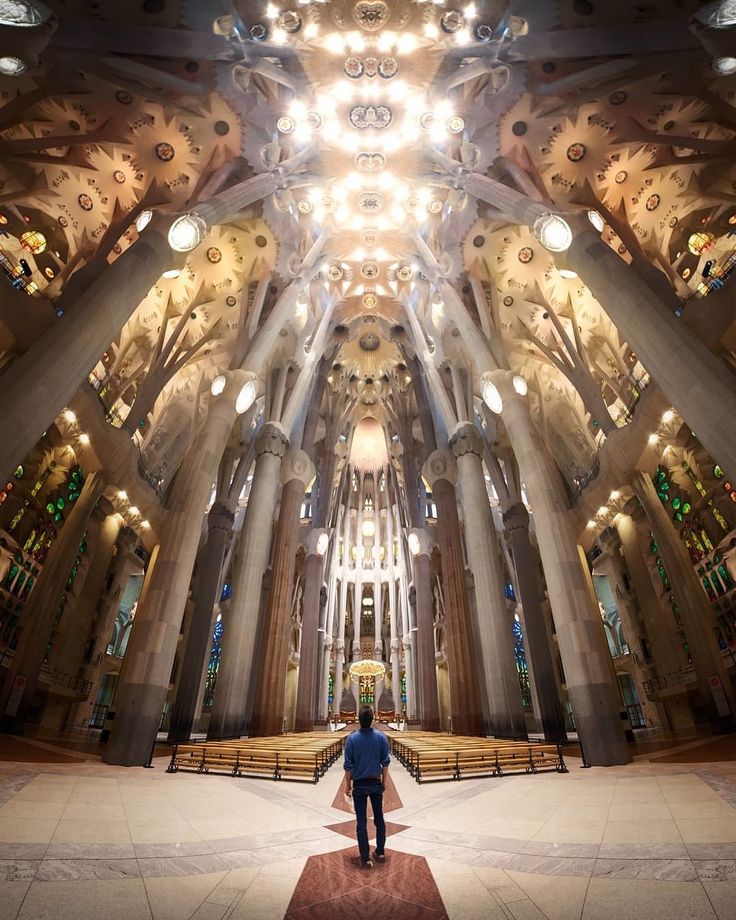
Advertisement
But then the Spanish Civil War erupted in 1936, and gangs of anarchists targeted churches as symbols of institutional oppression. The Sagrada Familia was attacked, and although the structure was miraculously saved, the anarchists broke into the architects’ workshop and smashed Gaudí’s precious plaster models.
Without the plaster models, progress on Sagrada Familia slowed to a crawl, further delayed by the decades-long fascist rule of Francisco Franco. When New Zealand-born architecture student Mark Burry backpacked through Spain in the 1970s, he was recruited to the cause of finishing Sagrada Familia while remaining true to Gaudí’s original vision.
“”
An interior view of the La Sagrada Familia Roman Catholic church on Feb. 6, 2019, in Barcelona, Spain. Construction started in 1874 and was designed by Catalan architect Antoni Gaudí.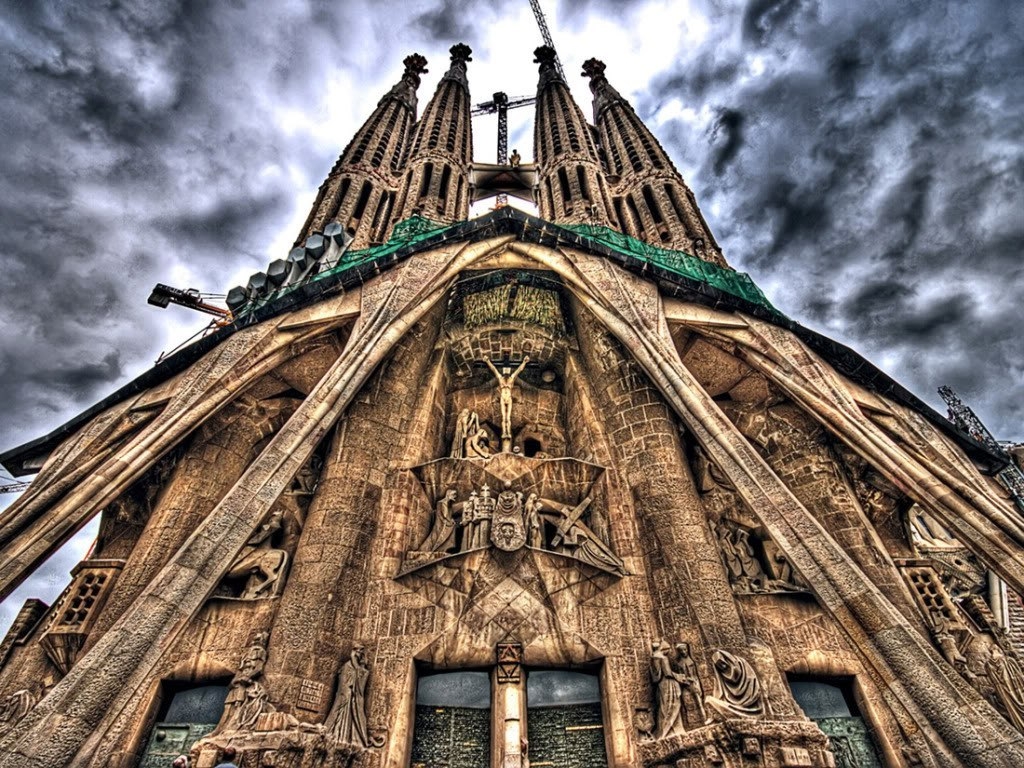
Matthew Horwood/Getty Images
When Burry asked how the stone masons and other craftsmen were receiving their instructions, he was shown boxes and boxes containing the fragmented remains of Gaudí’s plaster models.
“My job was to reverse engineer the models,” Burry told “60 Minutes.” It was the only way to faithfully reconstruct the vision locked inside Gaudí’s singular mind.
Advertisement
Technology to the Rescue
Burry worked on Sagrada Familia for 30 years and is responsible for bringing the project into the 21st century. He consulted with industrial designers working on vehicles, ships and other complex engineering problems. All of them were using 3-D aeronautical drafting software that could prototype designs and materials digitally before constructing them in the real world.
So Burry decided to employ the same drafting technology to solve Sagrada Familia’s thorniest engineering challenges on computers before casting them in concrete, iron and stone.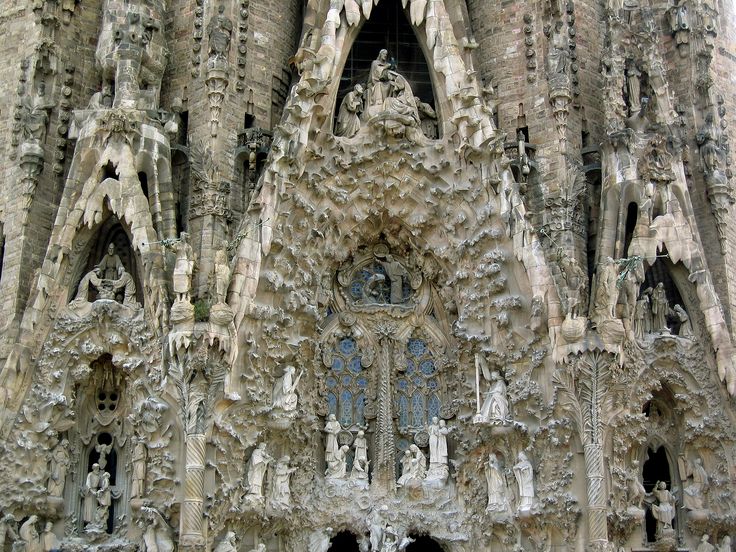
Advertisement
For such an old construction project, today’s Sagrada Familia is remarkably high-tech. In addition to using the latest virtual modeling software, components are prototyped using 3-D printers, and architects can explore and interact with digital models using virtual reality.
So when will it be done? Well, as Faulí mused to Architect Magazine in 2014, “Are the great cathedrals and basilicas of the world ever truly finished?”
Advertisement
Originally Published: Aug 5, 2019
Sagrada Familia FAQ
What does Sagrada Familia mean?
Sagrada Familia means “Sacred Family” or “Holy Family” in English.
Why is the Sagrada Familia unfinished?
The cathedral is an enormous undertaking and architect Gaudi didn’t expect to finish it in his lifetime. He was killed in streetcar accident in 1926. Then the Spanish Civil War came. Although it ended in 1939, the construction of the Sagrada Familia didn’t resume until the 1950s since most of the architect’s plaster models were destroyed during the war and had to be reconstructed.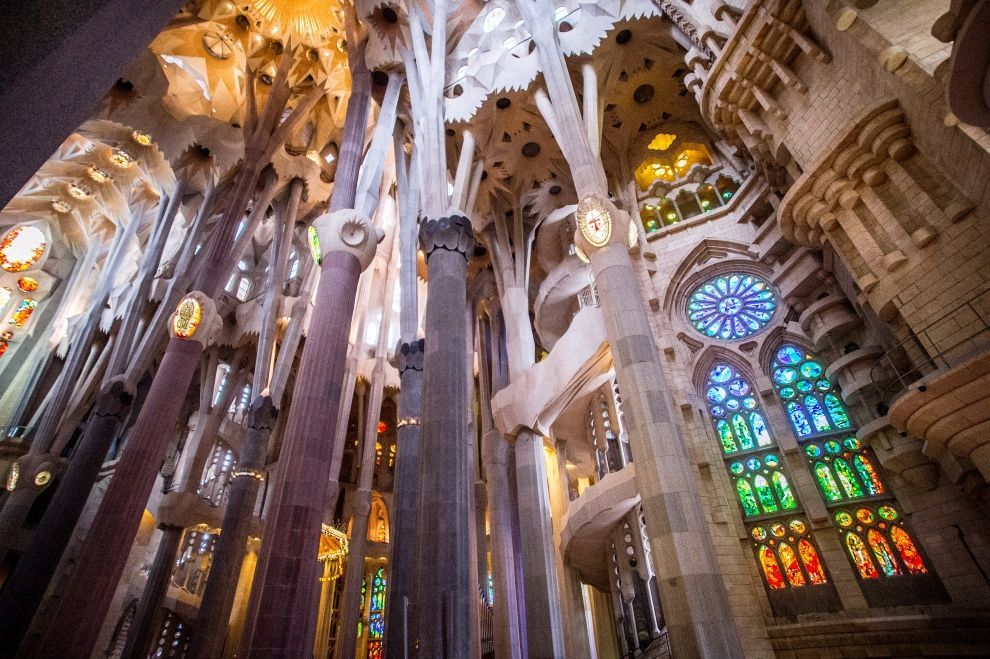
How much are tickets to the Sagrada Familia?
The entrance fee for adults is 26 euros, and there is no entrance fee for children younger than 11 years old.
What is inside Sagrada Familia?
The Sagrada Famili has a total of 18 towers with the one dedicated to Jesus Christ in the middle, another to the Virgin Mary, and four towers representing the four evangelists (Mathew, Mark, Luke and John) surrounding it. Twelve other towers represent the 12 apostles.
What is special about Sagrada Familia?
When completed, the Sagrada Familia is going to be the tallest religious structure in Europe at a height of 566 feet.
Cite This!
Please copy/paste the following text to properly cite this HowStuffWorks.com article:
Dave Roos
“Sagrada Familia Basilica Is Almost Finished, After 140 Years”
5 August 2019.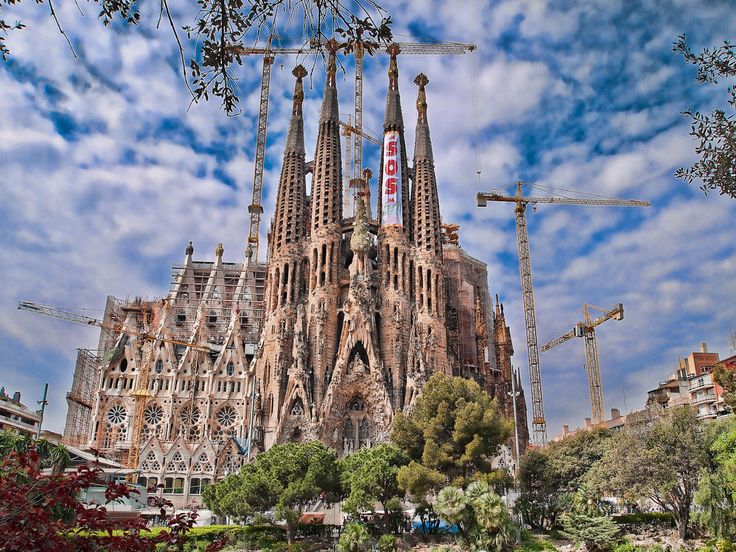
HowStuffWorks.com. <https://science.howstuffworks.com/engineering/architecture/sagrada-familia.htm>
25 April 2023
Citation
Sagrada Familia in Barcelona: history, photo
Address: Spain, Barcelona
Start of construction: 1882
Architect: Antonio Gaudí
Height: 9005 1 3 Number of towers: 18
Coordinates: 41°24’12.7″N 2°10’27.9″E
Contents:
Short description
Sagrada Familia – the architectural embodiment of the New Testament
Gaudí Surreal Gothic
Sagrada Familia on the map
Short description
There is a building in Barcelona that has been under construction for 130 years. This is the Sagrada Familia, or the Expiatory Temple of the Holy Family. For its unusual appearance, it is sometimes compared to a coral reef. Against the backdrop of the architectural ensemble of Barcelona, it is defiantly foreign, bizarrely fantastic.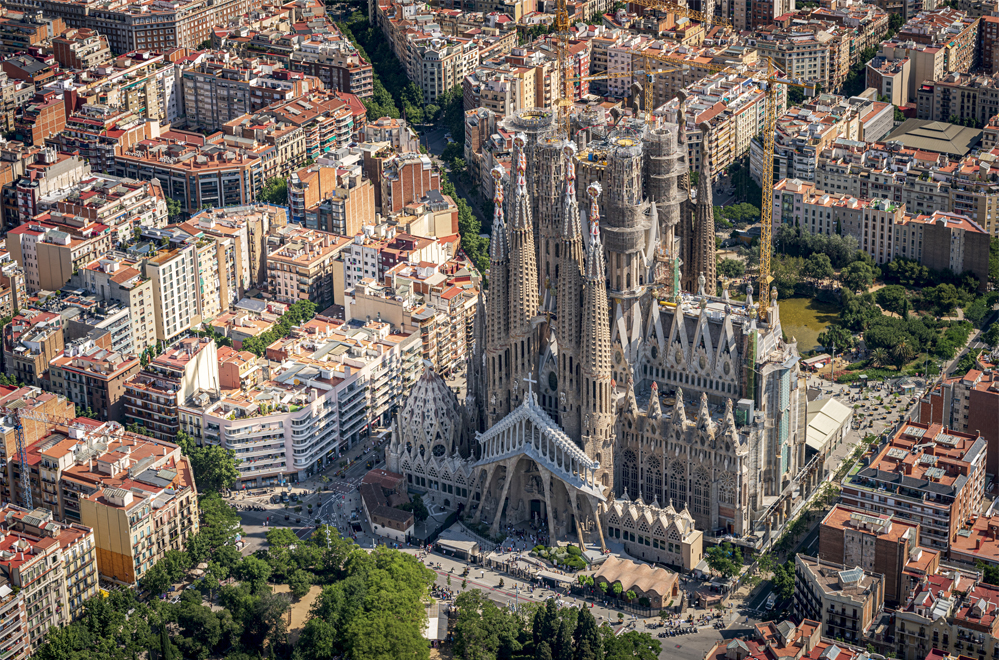
Bird’s-eye view of the cathedral
But one thing is clear right away: this temple is the creation of a genius. The idea of building a cathedral to the glory of the Holy Family originated in 1866 , when the priest Magnane and the Catalan bookseller Josep Maria Bocabella Verdaguer organized the “Society of the Admirers of Saint Joseph”. The society put forward a condition – the temple should be built solely on the donations of the townspeople as evidence of their love for God.
March 19, 1882 was solemnly laid the first stone in the foundation of the future Cathedral of the Expiation. Francesco Villar was entrusted with the management of the construction work, but due to disagreements that suddenly arose in society, the architect abandoned the project.
Northwest facade of the cathedral
Then, in 1883, the architect Antoni Gaudí was invited to implement the plan. At that time, on account of the 30-year-old Gaudi, there was only one building – a factory workshop.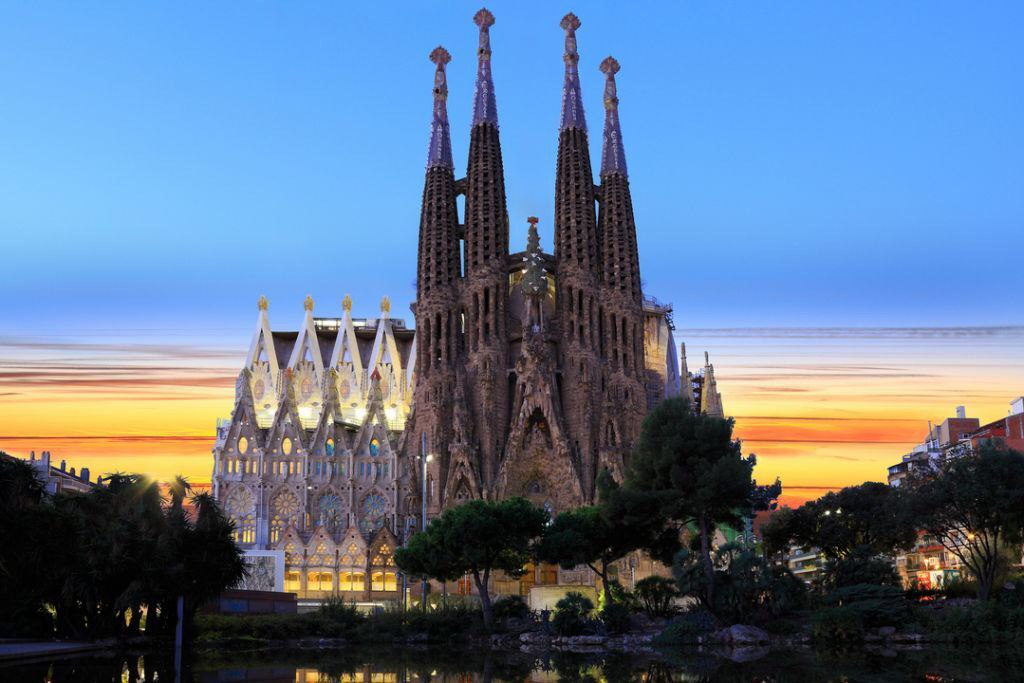
A deeply religious man, Gaudí conceived the idea of building a “temple-book” whose grandiose stone “pages” would tell about all the events of the New Testament. The architect gave 43 years of his life to the temple, but managed to build only the facade of the Nativity. From 19For 10 years, Gaudi refused numerous orders, fully concentrating on the Sagrada Familia temple. On June 7, 1926, the great architect died after falling under the wheels of a tram. He was buried in the chapel in the underground part of the Sagrada Familia.
Facade view of the Passion of Christ
Sagrada Familia – the architectural embodiment of the New Testament0004 . Each of them is formed by three-part Gothic portals topped with four spire towers from 98 to 112 meters high. Together they symbolize the 12 apostles.
Four 120-meter towers, erected in honor of the evangelists above the central nave, surround the 170-meter bell tower of Jesus Christ, and a slightly smaller tower of the Virgin rises above the apse.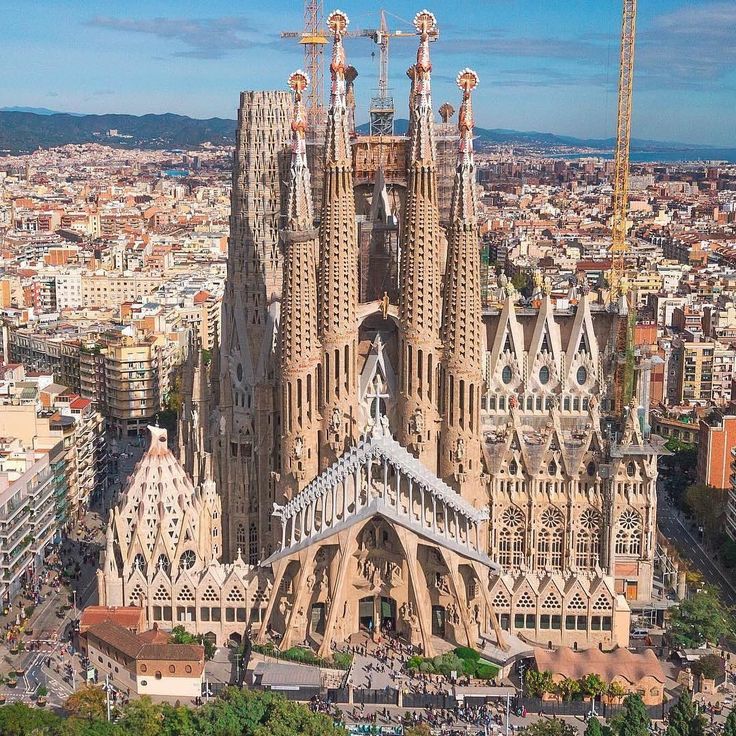
Cathedral with Carrer de Provenca
Evangelist towers will be decorated with symbols corresponding to each saint. Matthew is depicted as an angel, Mark as a lion, Luke as a calf, and John as an eagle. A huge cross will be installed on the central spire of Christ.
The rest of the towers will be decorated with sculptures of grapes and ears of wheat, identified with the wine and bread of Holy Communion. The facade of the Nativity, glorifying Christian virtues, is formed by three portals: the central entrance, Gaudí’s portal of Love was decorated with sculptural compositions illustrating scenes from the Annunciation and figures of trumpeting angels announcing the birth of Christ.
View of the facade of the Nativity of Christ
Above the right entrance, the Portal of Faith, selected scenes from the biblical story are presented, including the “Meeting of Mary and Elizabeth”, “Jesus and the Pharisees”.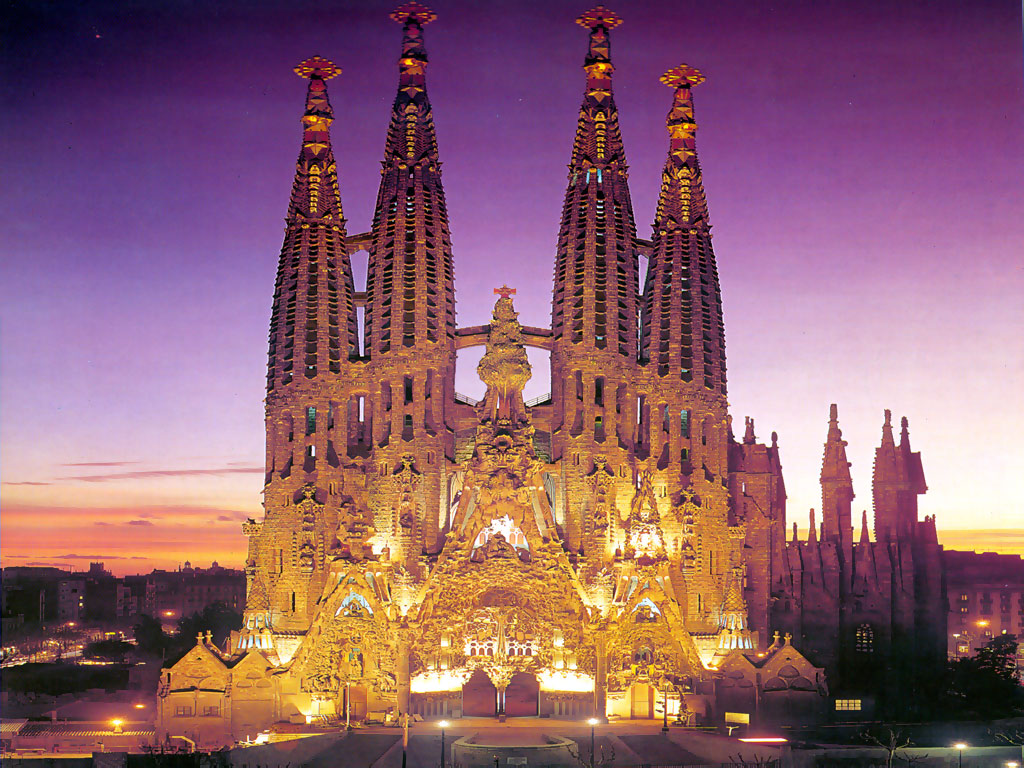
Gaudí’s surreal gothic
Portals and towers of the temple are decorated with abundant sculptures that reproduce the entire living world. Mollusks, turtles and salamanders froze on the facades. The cathedral, as if woven from cobwebs or openwork lace. The stones on the walls are processed in such a way that they imitate the movement of lava.
Towers of the Passion of Christ façade
Gaudí took the Gothic style as a basis and, through numerous experiments, achieved that the stone visually seemed weightless. Since the Expiatory Temple of the Holy Family continues to be built solely at the expense of donations from the townspeople, work is being carried out at a snail’s pace. With the current receipts of funds, the cathedral will be completed by 2026 . But the exact dates are unknown. Even Gaudi himself said: “My customer is in no hurry,” meaning God.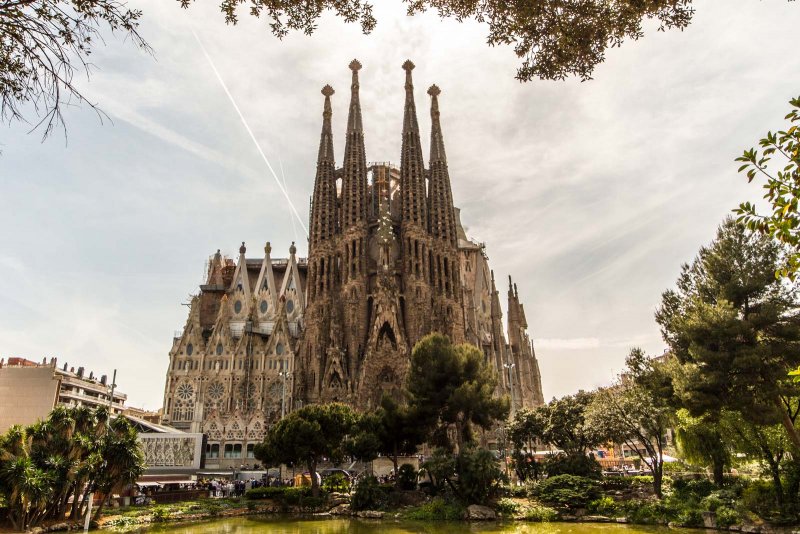
Attraction rating
|
← Spain |
Barcelona |
Europe → |
Sagrada Familia on the map
Zamosc
Milan
Rome
Florence
Amalfi
Assisi
Alberobello
Venice
Girona
Berlin
Munich
Paris
Athens
London
Torun
Vatican
Tallinn
Obidos
Prague
Budapest
Gaudi Cathedral in Barcelona – 70 photos
Gaudi Cathedral in Barcelona
Sagrada de Familia Cathedral in Barcelona
Expiatory Church of the Sagrada Familia
Madrid Cathedral Gaudí
Gaudí Architect Sagrada Familia
Gaudí Sagrada Familia in Barcelona
Sagrada Familia in Barcelona
Gaudí
Sagrada Familia in Barcelona 0005
Cathedral in Spain in Barcelona Sagrada surname
Antonio Gaudi Sagrada familia
Spain Gaudi Barcelona
Gaudi Sagrada Familia
Spain Sagrada Familia
Antoni Gaudí Sagrada Familia
Antoni Gaudí Sagrada Familia
Sagrada Familia Barcelona
Sagrada Familia in Barcelona
002 Sagrada Familia in Barcelona
Gaudí Cathedral in Barcelona
Gaudí Sagrada
Sagrada Familia Sagrada Familia Barcelona Spain
Spain Sagrada Familia Cathedral
Antonio Gaudí Cathedral
Sagrada Familia Church in Barcelona
Sagrada Familia Cathedral in Barcelona
Sagrada Familia Cathedral in Barcelona
Gaudí.

